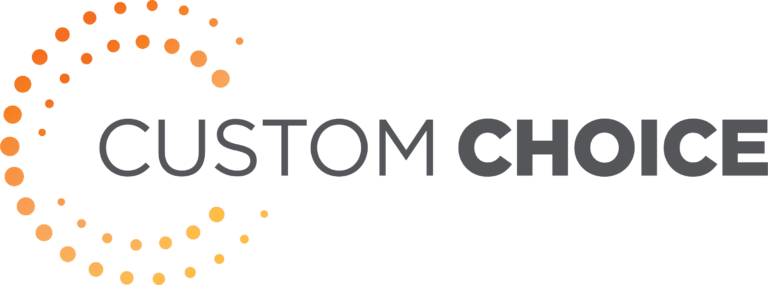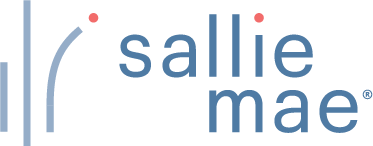Our goal is to give you the tools and confidence you need to improve your finances. Although we receive compensation from our partner lenders, whom we will always identify, all opinions are our own. Credible Operations, Inc. NMLS # 1681276, is referred to here as "Credible."
With the ever-increasing cost of college, you’ll likely need to borrow money to pay for your degree. But before you decide between federal vs. private student loans (your two main borrowing options), it’s important to get familiar with the differences between them.
Here’s what you need to know about federal vs. private student loans:
- Comparing federal student loans vs. private student loans
- Many people take out a mix of federal and private student loans
Comparing federal student loans vs. private student loans
When it comes to federal and private student loans, one loan type isn’t necessarily better than the other. Both work very differently, and they each have their own pros and cons.
Typically, it’s always a good idea to max out any gift aid (like grants and scholarships) as well as federal loans before turning to private loans. But here’s what you need to know about both loan types:
| Federal student loans | Private student loans | |
|---|---|---|
| Interest rates | 5.50% to 8.05% (depending on loan type) | Fixed rates from (APR):
3.74%+
Variable rates from (APR): 5.13%+ (Private lenders on Credible) |
| Fees | 1.057% to 4.228% (depending on loan type) | Varies by loan Generally no origination fees |
| Limits | $31,000 for dependent undergrads $57,500 for independent undergrads $20,500 for graduates (unsubsidized) | Can vary, but typically covers the cost of attendance |
| Offers subsidized loans | Yes | No |
| Loan forgiveness | Yes | No |
| Terms | Standard Repayment Plans: 10 years Consolidation and IDR plans: 10 to 30 years | 5 to 20 years (varies by lender) |
| Repayment Protections | Generous options for deferment, forbearance, and income-driven repayment plans | Limited options for deferment and forbearance |
| Option to change repayment plan or defer payments | Yes | No |
| Requires FAFSA | Yes | No |
| Requires cosigner | Typically no (unless applying for a PLUS loan with adverse credit) | No (but might increase chances of qualifying) |
| Requires credit check | Only for PLUS loans | Yes |
Federal student loans only have fixed interest rates
Federal student loans have fixed interest rates, meaning the interest rate stays the same for the entire life of your loan.
With private student loans, you can typically choose between a variable or fixed interest rate. Unlike fixed interest rates (which never change), variable rates may generally start low, but can increase and decrease over time based on market conditions. If the interest rate fluctuates, it can affect your monthly payment.
Filling out the FAFSA is required for federal loans
To qualify for federal student loans, you must complete the Free Application for Federal Student Aid (FAFSA) by the deadline. If you don’t, you’ll be ineligible for any federal student aid for that academic year.
Private student loans, on the other hand, don’t require you to fill out the FAFSA. Private lenders have their own applications and separate borrower criteria.
Learn More: How to Take Out a Student Loan
You’ll need a credit check for a private student loan
Most federal student loans (except for Parent PLUS and Grad PLUS Loans) don’t require a credit check. You can qualify for a student loan even if you have poor credit or no credit history at all. Even with PLUS Loans, the credit check is used to see if you have an adverse credit history; it doesn’t determine your eligibility or interest rate based on your credit score.
With Credible, you can check private student loan rates with multiple lenders by filling out a single form.
Federal loans limits are determined by the government
Most federal student loans cap how much you can borrow. As of 2020, the following student loan limits apply:
- Direct Subsidized and Unsubsidized Loans for undergraduate students: The maximum amount you can borrow per year ranges from $5,500 to $12,500, depending on your dependency status and what year you’re in at school.
- Direct Unsubsidized Loans for graduate students: Graduate or professional degree students can borrow up to $20,500 per year in unsubsidized loans.
- Parent PLUS and Grad PLUS borrowers: You can borrow up to the total cost of attendance, minus other financial aid you received.
Private student loans aren’t subject to the same limits. Typically, private lenders allow you to borrow up to the total cost of attendance of your program as determined by your school.
Learn More: How to Pay for Grad School
Federal student loans may qualify for student loan forgiveness down the line
If you take out federal student loans, you might qualify for partial or full loan forgiveness in some circumstances. Here are the three federal student loan forgiveness programs (note that private student loans are ineligible for the loan forgiveness and repayment plan options below):
Income-Driven Repayment Plan forgiveness
If you have federal student loans and can’t afford your monthly payments, one option is to sign up for an income-driven repayment (IDR) plan. Under an IDR plan, your monthly payment is based on your discretionary income and family size. Depending on your situation, it could be dramatically reduced.
After 20 to 25 years of making on-time payments (depending on which IDR plan you choose), the remaining balance of your loans should be discharged. But keep in mind that the forgiven amount is taxable as income.
Private student loans are not eligible for income-driven repayment plans.
Public Service Loan Forgiveness
If you have federal student loans and your employer is a government agency or nonprofit organization, you might be eligible for Public Service Loan Forgiveness (PSLF).
To apply for PSLF, you must work for an eligible employer for 10 years and make 120 payments on your qualifying federal student loans. And unlike IDR forgiveness, the forgiven balance with PSLF isn’t taxable as income.
Teacher Loan Forgiveness
Teachers might be eligible for $5,000 or $17,500 in loan forgiveness through the Teacher Loan Forgiveness Program, depending on the subject you teach.
To qualify, you must have Direct Subsidized or Unsubsidized Loans and teach full time for at least five years in a low-income school or educational service agency.
Private student loans can be taken out at any time
With federal loans, you must meet the FAFSA deadlines to get the financial aid you need. But with private loans, you have more flexibility — you can apply at any time. This can make private loans a good option if you need additional financing later in the semester.
You might need a cosigner for private student loans
You can qualify for federal loans on your own, even if you don’t have a steady income or good credit. But with private student loans, lenders require applicants to meet certain income and credit requirements.
In general, you’ll need to have good to excellent credit to qualify for a loan, or you’ll need to have a creditworthy cosigner apply with you. Keep in mind that if you choose to have a cosigner, they’ll be on the hook if you’re unable to make your monthly payment for any reason.
Learn More: Student Loan Requirements
Many people take out a mix of federal and private student loans
When it comes to federal vs. private student loans, one isn’t necessarily better than the other — it all depends on your situation. Also, if you’re a parent borrower or graduate student with excellent credit, keep in mind that you might qualify for a lower interest rate with a private student loan compared to PLUS loans.
If you decide to get a private student loan, be sure to compare as many lenders as possible to find the right loan for you. Credible makes this easy — you can see your rates with multiple lenders in a little as two minutes, all by filling out just one form.
| Lender | Fixed rates from (APR) | Variable rates from (APR) |
|---|---|---|
 | 3.79%+10 | 5.99%+10 |
 | 4.24%+1 | 5.99%+ |
 |
3.99%+2,3
| 5.59%+2,3 |
 | 4.24%+ | 5.44%+ |
 | 4.8%+8 | 7.75%+8 |
 | 5.75%+ | N/A |
 | 4.150%9 - 15.49%9 | 5.37%9 - 15.70%9 |
your credit score. 100% free! Compare Now |
||
Lowest APRs reflect autopay, loyalty, and interest-only repayment discounts where available | Read our full methodology | 10Ascent Disclosures | 1Citizens Disclosures | 2,3College Ave Disclosures | 11Custom Choice Disclosures | 7EDvestinU Disclosures | 8INvestEd Disclosures | 9Sallie Mae Disclosures |
||



